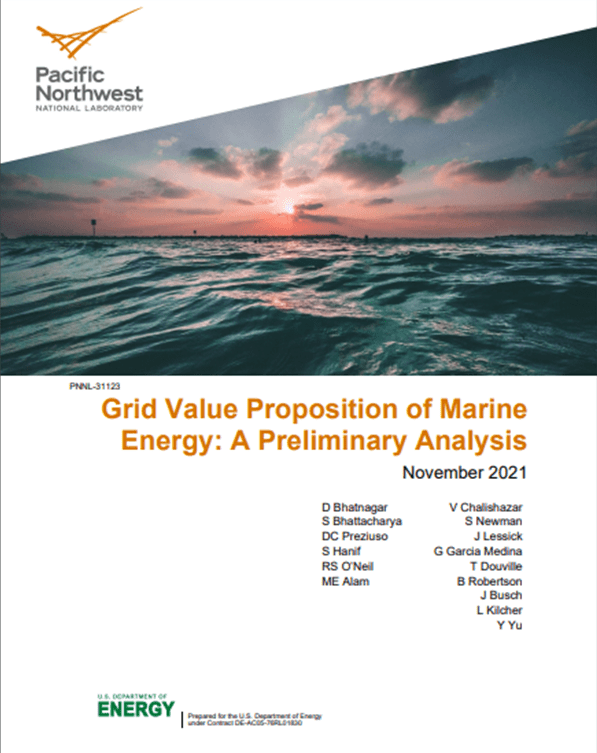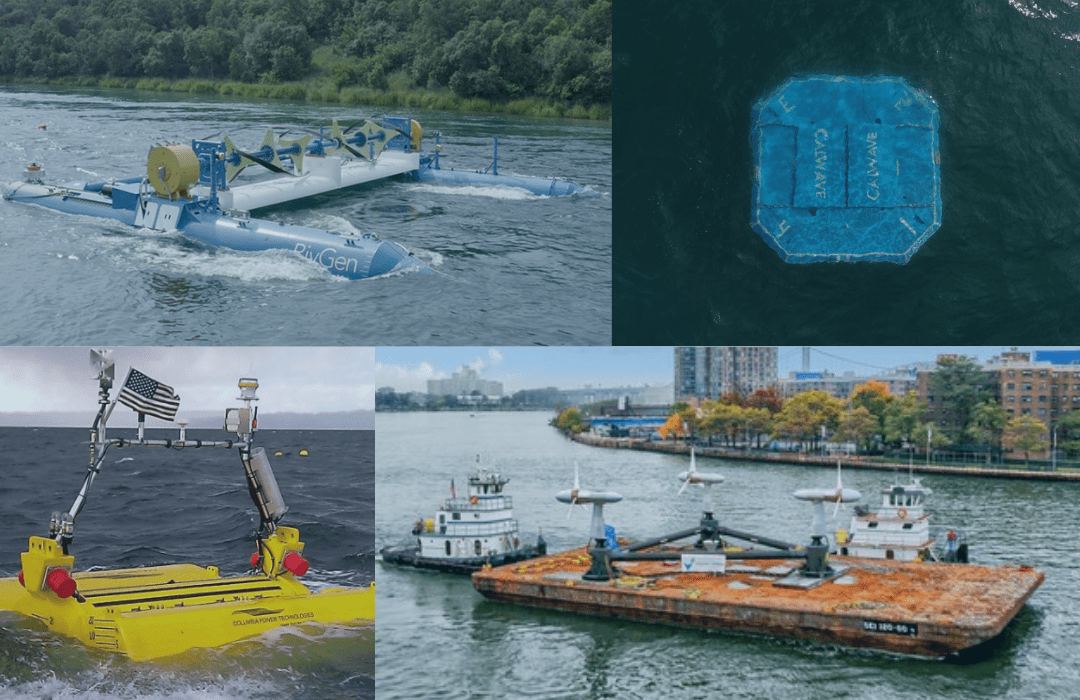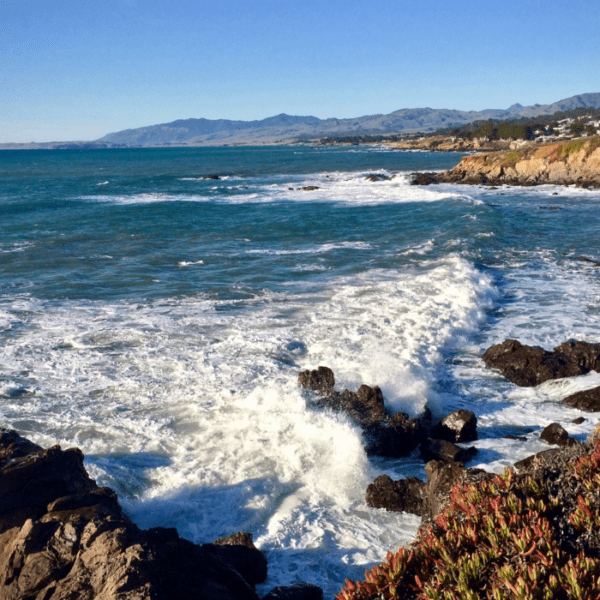Given the opportunity, marine energy technologies can contribute significantly and uniquely to a clean energy future, whether connected to a transmission grid system or from a Blue Economy perspective.
That’s the conclusion of a study, Grid Value Proposition of Marine Energy: A Preliminary Analysis, released in late 2021 by the U.S. Department of Energy (DOE) and the Pacific Northwest National Laboratory (PNNL). In the study, PNNL researchers focused on a “value-first” perspective to identify value propositions that wave, tidal, and ocean current technologies could offer to the grid.
The analysis demonstrates marine energy’s potential benefits, despite it being a relatively young technology and lacking the data necessary to prove its value proposition.
PNNL’s analysis concludes that “the potential for marine energy as a future grid technology remains strong.”

The Deep Dive
The report was developed with three goals in mind:
- Enable the marine energy industry to articulate additional value to potential investors and customers
- Allow system planners, utilities, and decision makers to have information to evaluate marine energy when considering a suite of available generating resources
- Guide DOE technology investments toward improving marine energy performance where it is likely to have competitive or unique value.
In addition to documenting the research to connect the grid and fundamental marine energy development, five key findings were identified:
- Aggregation of tidal generation for baseload energy faces challenges from a cost perspective.
- Tidal energy devices may be well matched for storage.
- There is a potential match between resource peak and electric demand across different time scales.
- Co-location with other energy sources may provide grid benefits.
- The availability and cost of land has been used in some utility decision making for resource selection and resulted in a portfolio selection that included marine energy.
With respect to grid connection, these technologies can offer benefits to the bulk system, isolated distribution systems, and/or remote local systems. One particularly helpful chart in the report – Figure S-1 — identifies the values marine energy resources can deliver to the grid, organized by location, timing, and special applications. This framework, developed using an analytical approach, is worth reviewing.
As technologies, such as fossil generation, are rolled off the grid and renewables added, the electric grid system will still need to account for the variability that comes with solar and wind resources. Resource adequacy gaps will need to be filled by renewable sources that have the ability to come on-line quickly and “firm up” other variable renewable resources.
Once validated, marine energy technologies have the potential to fill in a portion of the adequacy gaps facing the grid. This potential is particularly significant in states with coast lines, aggressive renewable energy targets, and remote areas highly reliant on diesel fuels.
Why It Matters
The DOE/PNNL report provides definitive and unique ways marine energy technologies could contribute to a clean energy grid and underscores the importance of moving toward mainstream commercialization of these technologies.
Finding potential sites to develop is not a problem. In March 2021, DOE, with the National Renewable Energy Laboratory (NREL), issued the Marine Energy in the United States: An Overview of Opportunities report, assessing the resource potential of marine energy (wave, tidal, ocean current, ocean thermal, and riverine marine). And the findings are far greater than many have expected.
The analysis demonstrates marine energy resources are large, predictable, and geographically diverse, with a potential to contribute significantly to our energy demand if deployed on a utility-scale. The report conservatively estimates the total marine energy technical resource in the 50 states is 2,300 terawatt-hours (TWh) a year, which is equal to 57% of the electricity generated in the U.S. in 2019. This is equivalent to powering 220 million homes.
What’s really needed is getting devices into the water to complete testing in order to prove viability and to reduce development costs. The National Hydropower Association has set deployment targets of 50 MW by 2025, 500 MW by 2030, and 1 GW by 2035. NHA’s Marine Energy Council is calling on the Federal Government to accelerate the commercialization of the sector. More details about the ten areas the association says need attention in order to achieve commercialization can be found in the Commercialization Strategy for Marine Energy.
Next Steps
Within its report, PNNL identified key next steps researchers, the marine energy industry, and electric grid stakeholders should take:
- Production of detailed device generation data from both an electrical interconnection perspective and a value perspective so that electric grid operators are able to understand the implications of marine energy device deployment.
- Analysis of the complementarity of marine energy with other resources and energy storage.
- Evaluation of the real power system impacts associated with marine energy deployment and the interconnection capacity available to support such deployment. Engagement with the offshore wind industry may benefit marine energy in accelerating potential development.
- Analysis of impacts on distribution grids and the value to remote communities and microgrids.












